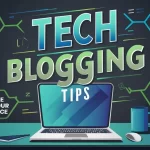You might be a Blender lover looking for the ideal tablet to enhance your digital sculpting skills. With the wide range of choices available on the market, choosing the best tablet for Blender can be overwhelming. Finding the right match for your sculpting needs is important for traditional tablets or those with screen graphics. Every choice, from Wacom to standard tablets, offers a unique experience using Blender. Let’s dive into the world of tablets and find the perfect choice for your Blender process.
Table of Contents
Unveiling the World’s Best Tablet for Blender
Are you looking for the perfect tablet to take your Blender sculpting to the next level? Let’s dive into the world of tablets for Blender and explore the various options to enhance your digital sculpting experience. Whether you prefer a traditional or graphics tablet, choosing the right option will revolutionise your Blender workflow. See how these tablets, including the screen graphic varieties like those from Wacom and the standard options, can enhance your creativity and productivity!
The Best Tablet for Sculpting in Blender
A few variables become the most important factor when picking the best tablet for chiselling in Blender. To make a smart choice, think about the things below:
- Resolution and Size: Opt for a tablet with high resolution and a comfortable size to ensure precision in your sculpting process.
- Pressure Sensitivity: Look for a tablet with excellent pressure sensitivity levels for detailed sculpting control.
- Compatibility: Ensure the tablet is compatible with Blender to avoid any technical hitches during your sculpting sessions.
- More Features: Explore tablets with extra features like customisable buttons or stylus pens for a tailored sculpting experience.
Screen Tablets vs. Traditional Tablets
While bantering between screen tablets and conventional tablets for Blender chiselling, gauging the advantages and disadvantages of each is fundamental.
- Screen Tablets: These tablets offer a more intuitive sculpting experience with direct pen-on-screen interaction, providing a natural feel akin to traditional art mediums.
- Traditional Tablets: While these tablets may lack a screen, they are often more effective and can be effective for sculpting in Blender once you adapt to the hand-eye coordination required.
Which one of these is the choice you will make? Well, that all depends on what kind of operating system you prefer or your goals for 3D modelling.
Exploring Traditional vs. Graphics Tablets
We will see how traditional and graphic tablets will work with this programme. Doing so may help us make a more informed decision on the tool we want to use for our sculpting needs. Both have their good and bad sides. Furthermore, we will research traditional tablets and use your finger for virtual sculpting.
Key Factors to Consider
When comparing the pros and cons of traditional tablets vs. graphics tablets for Blender sculpting, consider a few critical factors to decide which tablet best fits your needs. Consider the following:
- Control and Precision: Traditional tablets offer precise control but may require some hand-eye coordination change for beginners, while graphics tablets provide immediate hand-to-screen interactions for enhanced precision.
- Price and Affordability: Often, traditional tablets have more bells and whistles but are generally more expensive than most graphics tablets, so for someone who wants a cheap sculpting solution, it would be more suitable.
- Comfort and ergonomics: Graphics tablets with screens provide a more natural drawing experience and are like visual artists. Traditional tablets might need accessories like pen grips for more comfortable, long sculpting sessions.
Choosing the Right Tablet Type
Your final decision between traditional and Wacom tablets depends on your preferences and sculpting needs. Are you someone who values simplicity and ease over everything else, or are you an individual who likes to dabble with more advanced features and a more natural sculpting experience? By assessing your needs and the dollar signs on your budgetary requirements, you can choose the tablet form factor that best exemplifies your Blender sculpting needs.
Each conventional and illustrated tablet has interesting qualities and shortcomings, perfect for various stone carvers’ inclinations and work processes. So actually, if you could, every one of them. If you’re uncertain which kind of tablet would match your chiselling style more or upgrade your general productivity in Blender, research the two tablet types and explore them by some means. So, what tablet “talks” to your chiselling sensibilities at the end of the day?
Diving into Sculpting with Wacom Tablets
Are you ready to dive into the wonderful world of sculpting in Blender? My video tutorial series will teach us how to use Blender’s Grease pencil tool to create a traditional 2D animation. Although I’ll be covering sculpting in quite some detail, I won’t be going into great depth about materials, so texturing, lighting, and rendering-wise, this tutorial may be a little thin. Get ready for a thrilling ride with ups and downs!
Advantages of Wacom Tablets for Sculpting
Given that one of the sculpting aspects of Blender is supported, tablets can provide a great deal of advantages that suit digital artists, which would include the following:
- Precision and Sensitivity: Wacom tablets boast exceptional pen pressure sensitivity and accuracy, allowing for intricate sculpting details with utmost precision.
- Customisable Features: Enjoy the flexibility of customising shortcuts and buttons on Wacom tablets to streamline your sculpting workflow and boost efficiency.
- Natural Drawing Feeling: Sculptors can get a natural drawing feeling with Wacom tablets, which is similar to traditional art materials and makes the switch to digital sculpting easy.
Maximising Your Wacom Tablet Experience
To use your Wacom tablet for sculpting in Blender, it is vital to explore the many features and functionalities offered by these advanced devices:
- Use Pressure Sensitivity: Experiment with the different pressure levels supported by Wacom tablets to achieve varying sculpting effects and textures in your Blender projects.
- Try Different Pen Nibs: Wacom tablets often come with a range of options, allowing you to customise your sculpting experience by selecting nibs that suit your sculpting style.
- Regular Calibration: Ensure to calibrate your Wacom tablet to maintain optimal performance and accuracy during your sculpting sessions in Blender.
Unleash the full power of your Wacom tablet and learn from over 60 expert artists’ digital sculpting insights & workflows in Blender to enhance your digital sculpting skills and open new creative possibilities. Are you ready to take your digital sculpting journey to the next level with Wacom tablets?
Enhancing Your Skills with Screen Tablets
If you want to dig deeper into sculpting in a blender and use a screen tablet,. Sculpting with a screen tablet is a different kind of sculpting, and you can put your creativity into your piece of sculpture. It can be a scene of thoughtful creation if you know what pieces you need for your UI and how to use them on your tablet. Low- to advanced users of Blender will find (for lack of a better description) magic in this course. And it could be awesome for Christmas. Blitz for future sculpting work.
Benefits of Using Screen Tablets for Sculpting
As a stone carver pushed into computerised displaying, I’ve encountered firsthand how having a tablet like the Huion Kamvas 16 can open up a different universe of conceivable outcomes in Blender. Besides the fact that they improve the actual chiselling “feel,” they have a few points of interest that make the general sculpting experience more pleasant and profitable. Let’s look at some of the most important benefits:
- Direct Interaction: With screen tablets, artists can draw on the screen, resulting in a seamless and intuitive sculpting experience that resembles traditional sculpting methods.
- Visual Clarity: The high-resolution displays of screen tablets provide crisp visuals, allowing sculptors to see intricate details and textures as they work on their Blender projects.
- Efficiency and Productivity: Screen tablets enable sculptors to work more by eliminating the disconnect between hand movements and on-screen actions, leading to a smoother sculpting workflow.
Tips for Maximising Your Screen Tablet Experience
To what benefit can Blender tablet users chisel in Blender? Are there any tips and strategies to improve your chiselling skills with a screen tablet in Blender?
- Use Multi-Touch Gestures: Explore the multi-touch capabilities of your screen tablet to navigate Blender’s interface more easily and execute sculpting operations with ease.
- Experiment with Different Stylus Options: Try various stylus pens to find one that offers the perfect balance of comfort and control for your sculpting projects in Blender.
- Adjust Screen Settings: Fine-tune your tablet’s brightness, colour calibration, and screen orientation to create an optimal working environment that suits your sculpting preferences.
Now that you know all these screen tablet tips, it’s time to take your digital sculpting endeavours to the next level. Incorporate these tips into your sculpting routine, and see your abilities, productivity, and creativity in Blender soar like never before. Are you ready to dive into the world of sculpting with touchscreen tablets?
Navigating the Best Tablets for Blender
Finding the best tablets for a blender is not easy because the market is filled with tonnes of the best but cheap ones, and you will end up seeing your money dancing in people’s hands. The point is, which tablet will be good for your sculpting in Blender? The options may vary; some may prefer versatility, some prefer functionality, and the rest may choose the cheapest. Let’s meet our match.
Factors to Consider When Choosing a Tablet
When shopping for the best tablet for Blender sculpting, there are a few important factors to consider. Here are some of the essential considerations to keep in mind:
- Compatibility: Ensure your tablet is compatible with Blender to avoid compatibility issues during sculpting sessions.
- Features and Functionality: Look for tablets with pressure sensitivity levels, customisable buttons, and ergonomic designs to optimise your sculpting workflow.
- Budget Constraints: Check your budget constraints and decide whether you can invest in premium tablets like Wacom or opt for more options without compromising quality.
Exploring Tablet Options
When it comes to the tablet selection for Blender, you will notice there are a few options. You can go for the traditional tablets or even the cool, innovative tablets. Here are some common types:
- Traditional Tablets: These tablets offer simplicity and affordability, making them suitable for beginners or those on a tight budget looking to enhance their sculpting skills in Blender.
- Graphics Tablets with Screen: Advanced graphics tablets with screens provide a more immersive sculpting experience, mimicking traditional art mediums and offering enhanced precision and control.
- Wacom Tablets: Renowned for their superior quality and performance, they are a top choice for professional sculptors seeking unparalleled precision and functionality in Blender.
Answer: By investigating the different tablet choices accessible for Blender chiselling and gauging the upsides and downsides of every classification, you can settle on an informed choice that aligns with your chiselling inclinations and spending contemplations. Is it true that you are prepared to set out on the adventure of choosing the best tablet to lift your chiselling capacities in Blender?







1 thought on “The Ultimate Guide to Choosing the Best Tablet for Blender”
Comments are closed.